The peace lily is a tropical beauty with a fairly laid-back personality. Its lush, dark green leaves beautifully highlight its unique flowers — but it isn’t a lily at all! Those white “flowers” are actually modified leaves called spathes, which cradle the tiny true flowers inside. But the best part about these stunning blooms is their easy care. Peace lilies are low-maintenance plants that can thrive for years. Learn how often you water peace lilies and discover some critical tips for a beautiful bloom!
How Often Do You Water Peace Lilies?
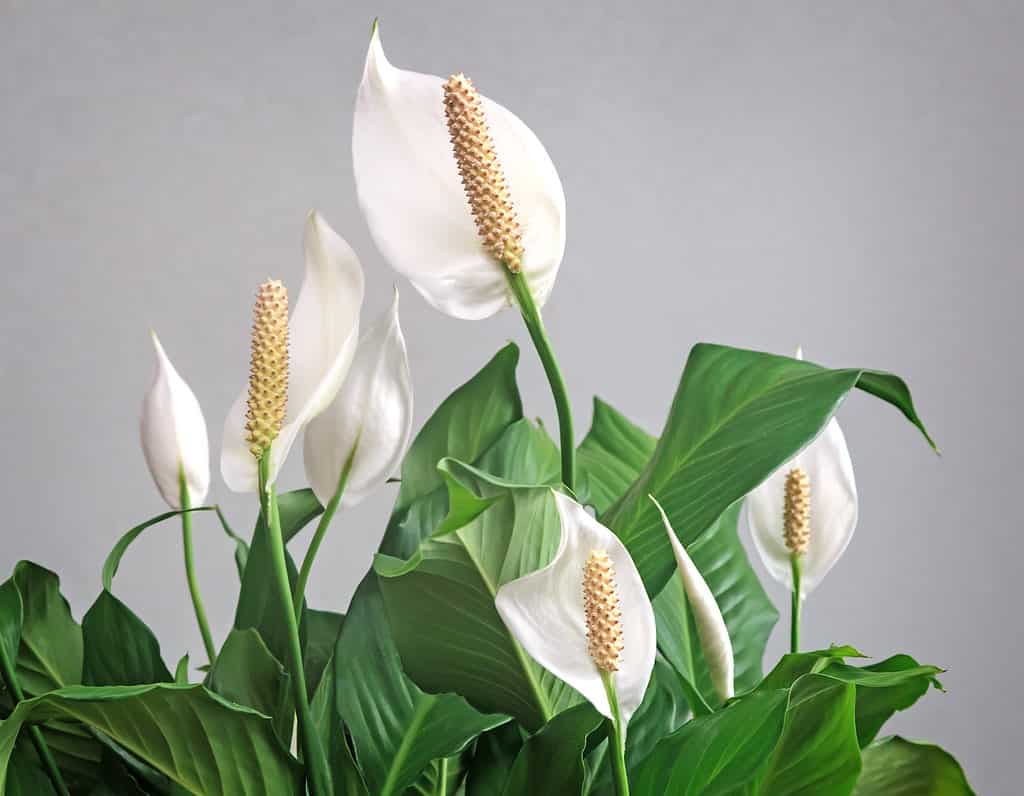
In winter, peace lilies typically don’t need as much water as they do in the spring and summer.
©iStock.com/Galina Tolochko
Unlike many other plants, peace lilies don’t have a set watering schedule. Instead, the key is to monitor their soil moisture. These lovely plants thrive in slightly moist soil but beware of overwatering, which can lead to root rot. In addition, peace lilies will visibly communicate their thirst by wilting and looking droopy. If you see this in your peace lily, don’t panic — it just means that your plant needs a drink!
So, how do you know if your peace lily needs to be watered? Simply stick your finger into the top inch of soil. If it is dry, then it’s time to water. Slowly pour water into the container until it trickles out the drainage holes. Peace lilies thrive in humid environments, so you can also occasionally mist their leaves for an extra treat.
Your peace lily’s condition also can communicate its watering needs. Drooping leaves or leaves with brown tips, for example, are typically signs that your plant needs more water. While older leaves naturally turn yellow, yellow leaves can also indicate that your plant is getting too much water or that it needs to be re-potted.
Outside
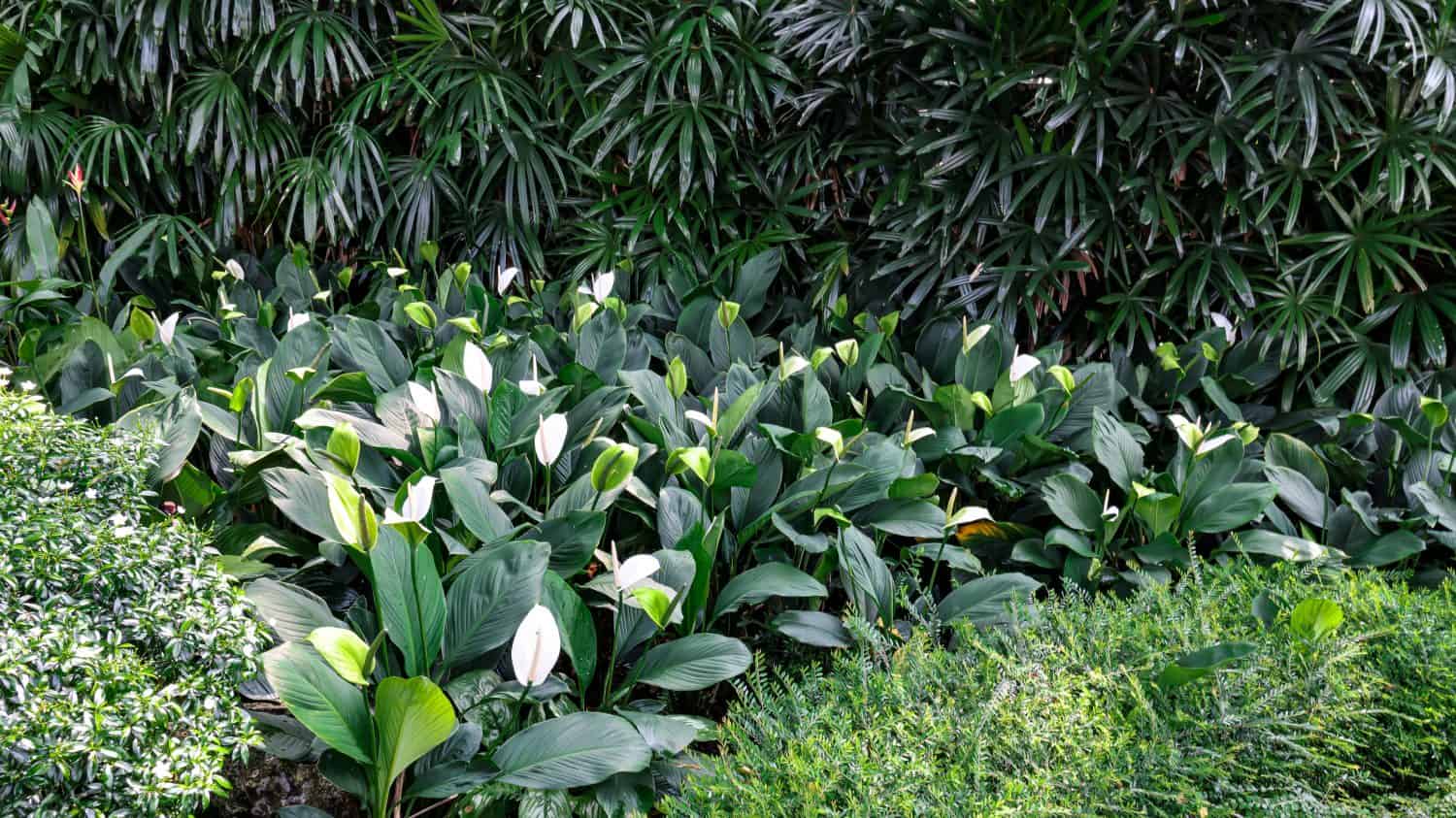
Compounds in peace lily leaves can cause swelling and vomiting.
©Dr David Sing/Shutterstock.com
Most people enjoy keeping peace lilies as potted plants in their homes, both for their beauty and their air purifying effects. However, for those living in warmer climates (USDA Zones 10 to 12), these elegant plants can flourish outdoors as well. Whether indoors or outside, peace lilies crave consistent moisture. Plant them in a shady area with good drainage, and provide water to keep the soil slightly damp but not soggy. However, be aware that peace lily leaves are toxic, so keep them out of reach of curious children and pets.
In Water
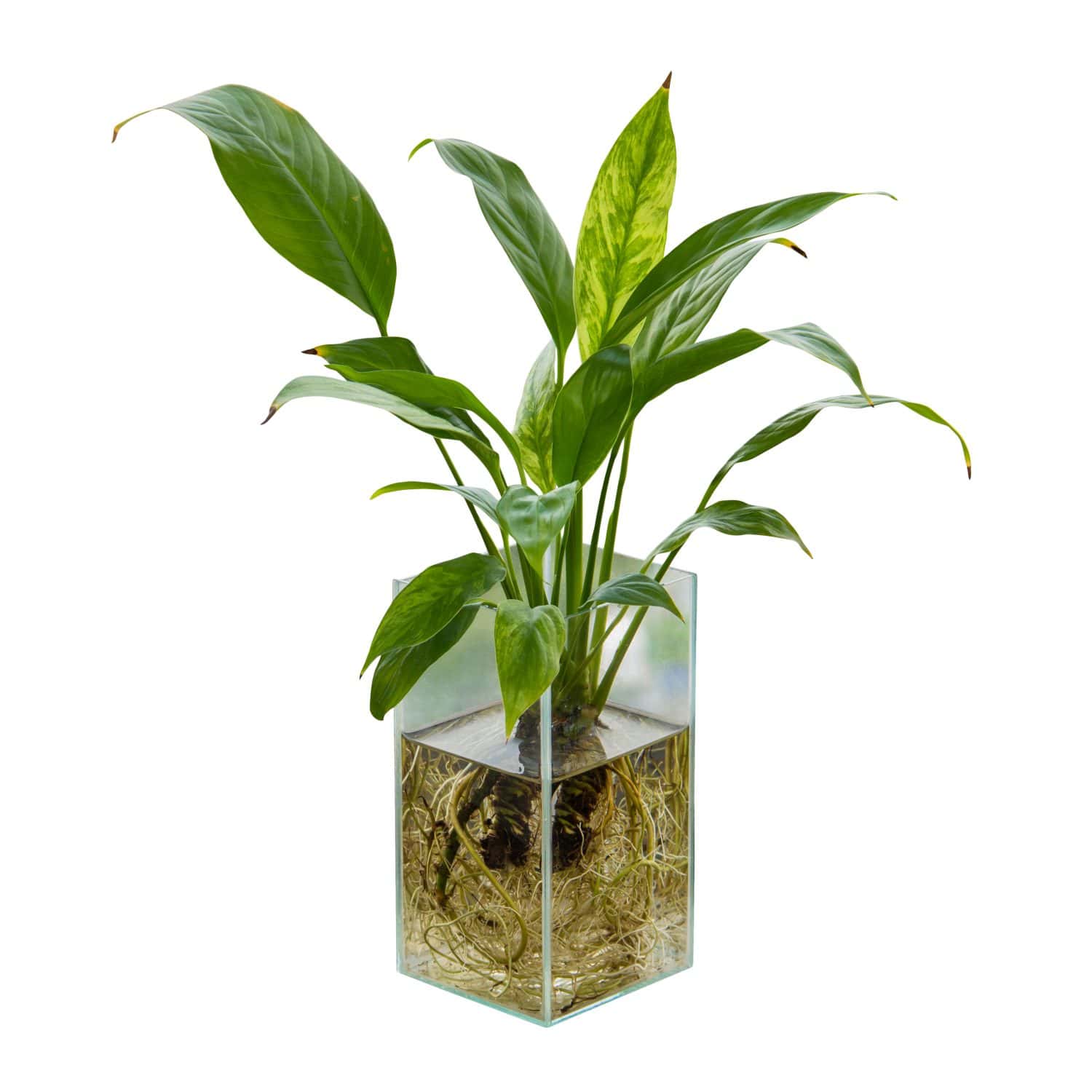
Direct sun will scorch your peace lily’s leaves.
©mrkob/Shutterstock.com
Although less common, another stylish approach to growing peace lilies is cultivating them directly in water. This method eliminates the need for a watering schedule, but there are still a few important things to keep in mind for your peace lily to thrive.
A peace lily growing in water isn’t going to soak up the same nutrients that it would get from soil. You’ll want to feed your peace lily with a few drops of liquid fertilizer once to twice a week. However, remember that too much fertilizer is just as bad as no fertilizer at all, so don’t overdo it!
In addition, plan to change your plant’s water every two weeks to keep it happy and healthy. You’ll want to use distilled water. Tap water contains things like chlorine and fluoride, which are harmful to peace lilies. As your peace lily drinks and evaporation occurs, simply top off the water in the container.
5 Critical Tips for a Beautiful Bloom
1. Give Your Plant the Right Water
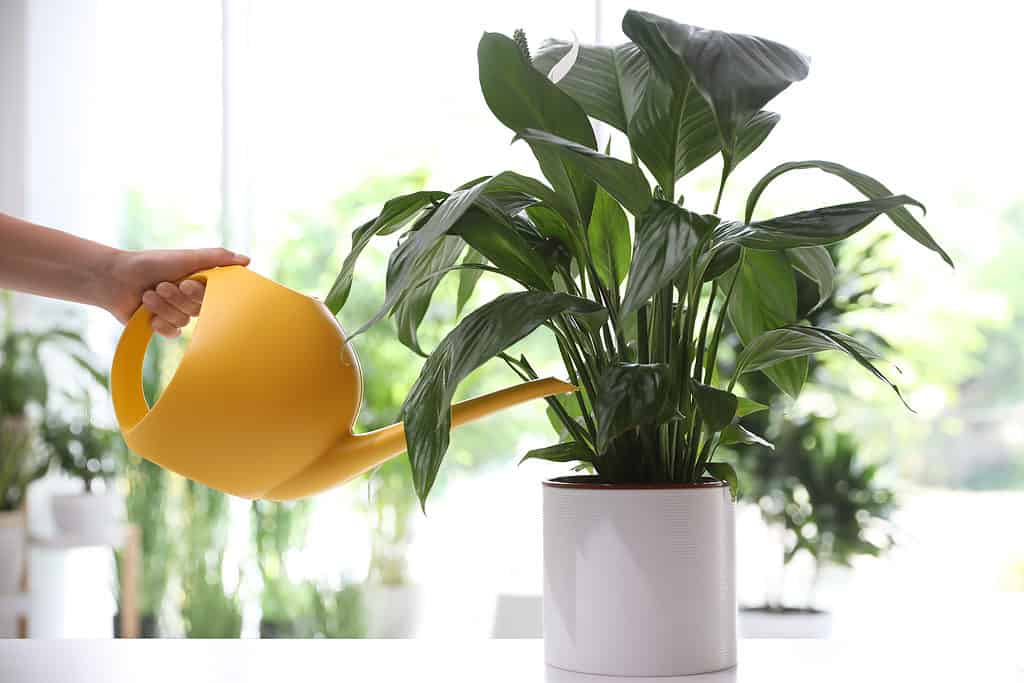
A peace lily being watered in a pot
©iStock.com/Liudmila Chernetska
Peace lilies are relatively hardy plants, but their primary need is water. Tap water, unfortunately, isn’t good for peace lilies. The chlorine and fluoride it contains can damage your peace lily and cause brown leaf tips. Instead, opt for room-temperature, distilled water to avoid shocking your plant.
2. Feed Your Peace Lily Regularly
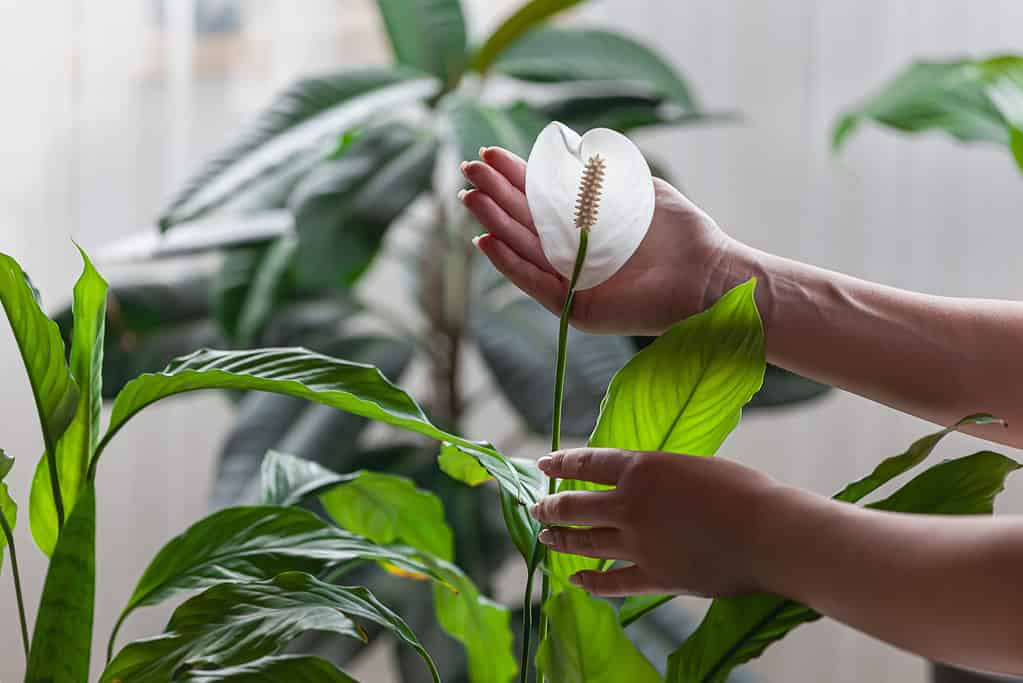
Fertilizing peace lilies encourages them to flower.
©iStock.com/perfectlab
Peace lilies do not need a ton of fertilizer — a little goes a long way for these plants. To encourage flowering in the spring and summer, begin feeding your peace lily every six weeks toward the end of winter.
3. Provide Warmth and Light

Peace lilies thrive with indirect light.
©New Africa/Shutterstock.com
True to their tropical nature, peace lilies love warmth. Aim for daytime temperatures between 65 and 75 degrees Fahrenheit, with nights a bit cooler at 55 to 65 degrees. Keep your peace lily away from heat sources like radiators, as well as air conditioning vents, doors, and drafty windows.
Although direct sunlight is a bit too much for peace lilies, they still need plenty of sunshine. Indirect but bright light is ideal, or dappled sunlight for part of the day.
4. Keep an Eye on Those Leaves
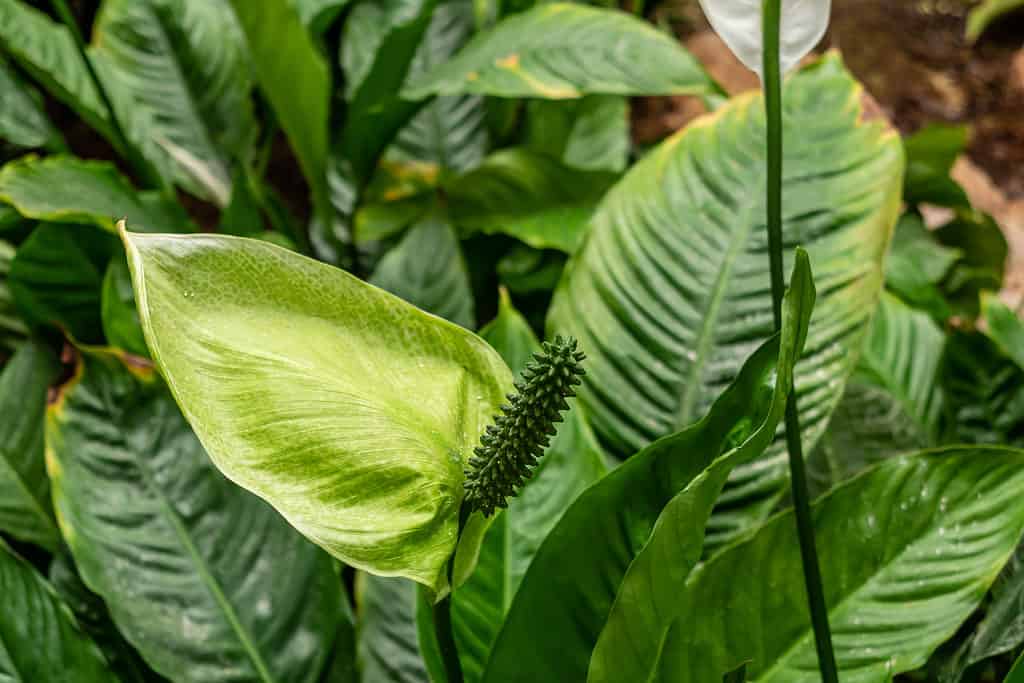
Monitor your plant’s leaves to know what it needs.
©iStock.com/JOSE LUIS VEGA GARCIA
Peace lilies can be a bit dramatic at times, but this also means that they communicate their needs. When thirsty, for example, they may wilt overnight — but a good drink will help them perk right back up. Their leaves can help provide daily health reports:
- Dusty leaves: Peace lilies have beautiful, broad leaves that tend to collect dust. To keep their photosynthesis process up and running, occasionally wipe them gently with a damp paper towel.
- Yellow leaves: Older leaves naturally turn yellow and die. Removing these leaves can help your plant focus its energy on new growth. However, yellowing leaves can also signal that your peace lily is getting too much water.
- Brown leaf edges: Not getting enough water or getting too much direct sunlight can cause brown edges on your peace lily’s leaves. Simply move your peace lily to a new location, adjust your watering schedule, and/or provide additional humidity.
5. Re-Pot Your Peace Lily When Necessary
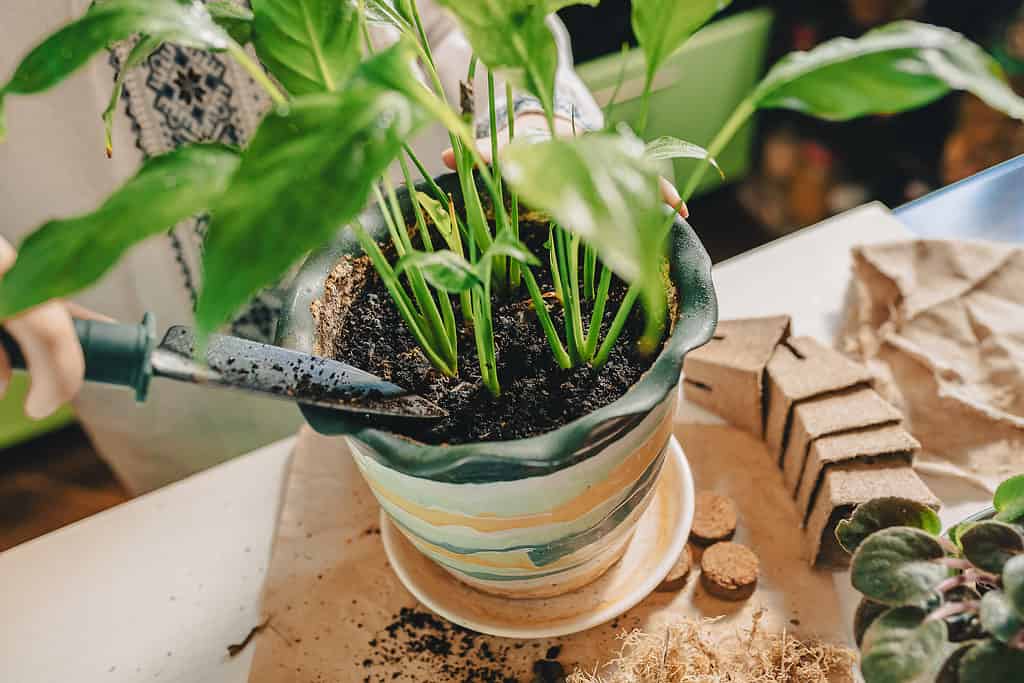
It is best to re-pot your peace lily every two years, ideally in the spring.
©iStock.com/Larisa Stefanuyk
Like all plants, eventually, your peace lily will outgrow its current container. When this happens, you may notice that water goes straight through the soil and drainage holes. This means that your peace lily is likely rootbound. In other words, there isn’t enough room for its roots inside the pot, so they are now circling tightly together.
When it’s time to re-pot your peace lily, choose a new container 2 inches wider than the root ball (where the roots are collected in a tight mass). Use a well-draining potting mix that retains moisture but avoids becoming soggy.
In addition, if your peace lily gets really big, you can also divide it. This creates new, smaller plants for you to enjoy.
The photo featured at the top of this post is © iStock.com/Liudmila Chernetska
Thank you for reading! Have some feedback for us? Contact the AZ Animals editorial team.







